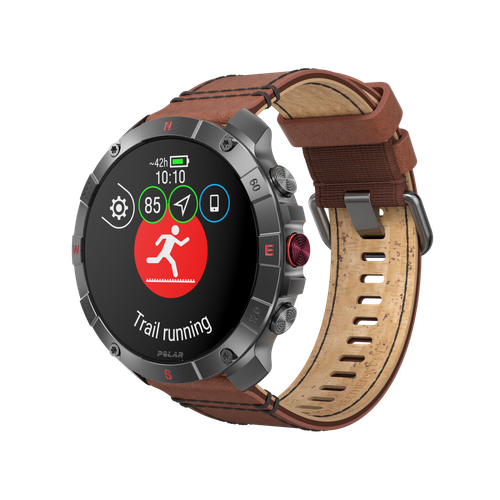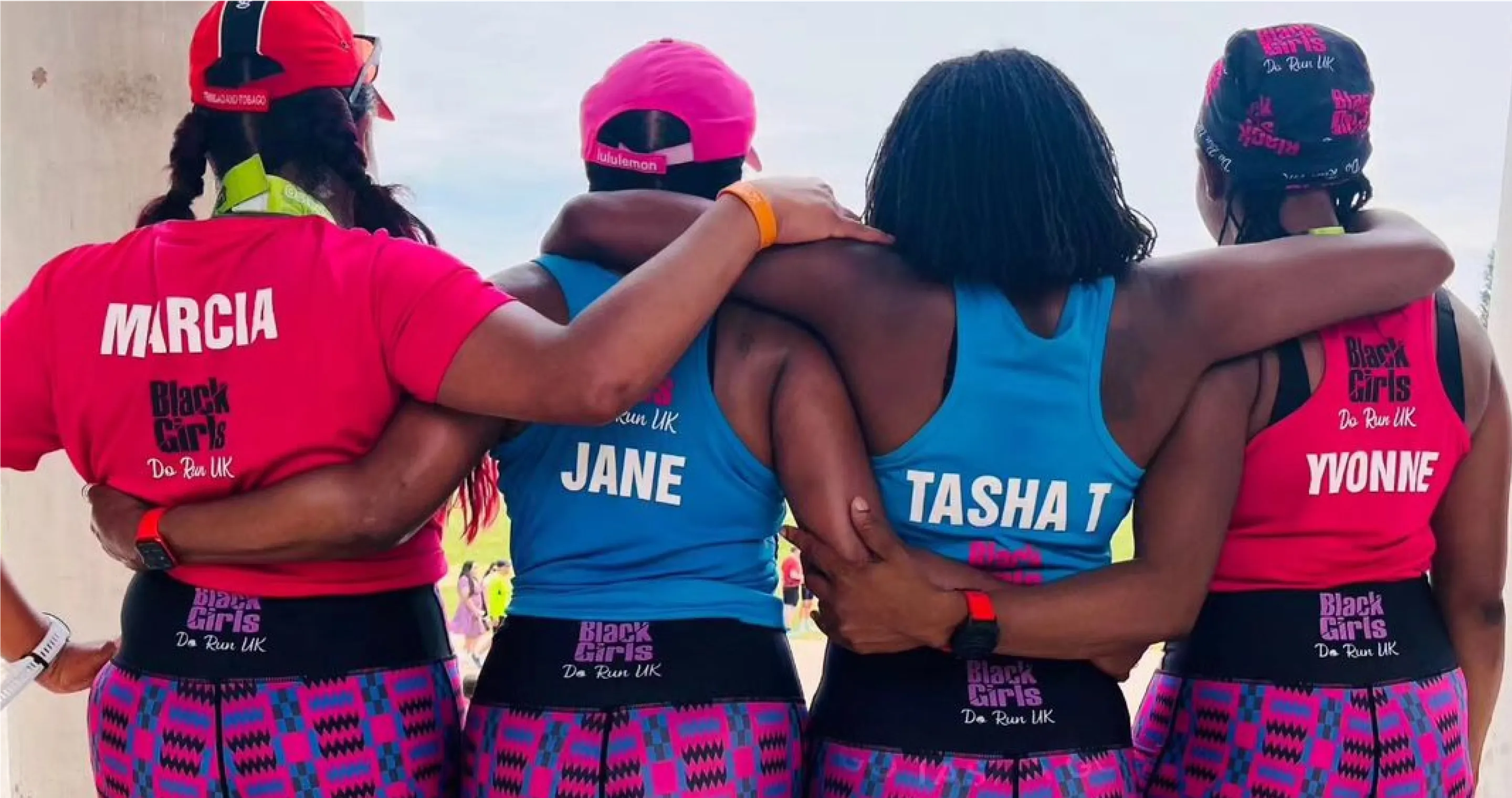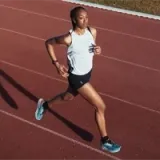The seed was planted when Thompson read about a famed endurance event in a book. Race to the Stones is described as a magical mixture of English woodland, riverside, and ridge trails, culminating at Avebury’s prehistoric stone circle. “Ever since [reading about it], that race had been on my mind. Niggling,” she reflects. “I kept looking at it again and again.”
Thompson floated the idea past Linda Agyemang, her long-time running buddy and fellow member of Black Girls Do Run UK. Agyemang was keen, so they decided to suggest it to the club. Would anyone else be keen to complete a 50km ultramarathon in one day? They were stunned when nearly 20 others expressed interest.
Until recently, Black Girls Do Run UK wasn’t a running club where conversations often turned to ultra-endurance events. Founded in 2019, the group initially comprised Thompson, Agyemang, and a handful of friends. It was rare for any of them to spot other black women at marathons, so, taking inspiration from the popular running community Black Girls Run in the US, Thompson decided to create a supportive group to help them collectively feel less alone.
Thompson began recruiting new members at races with her beaming smile and encouraging attitude. Their energetic presence on Instagram and the boost in interest in running during the pandemic meant the club quickly grew to around 100 members nationwide.
(Image credit for main photo above: @callmelin_1)
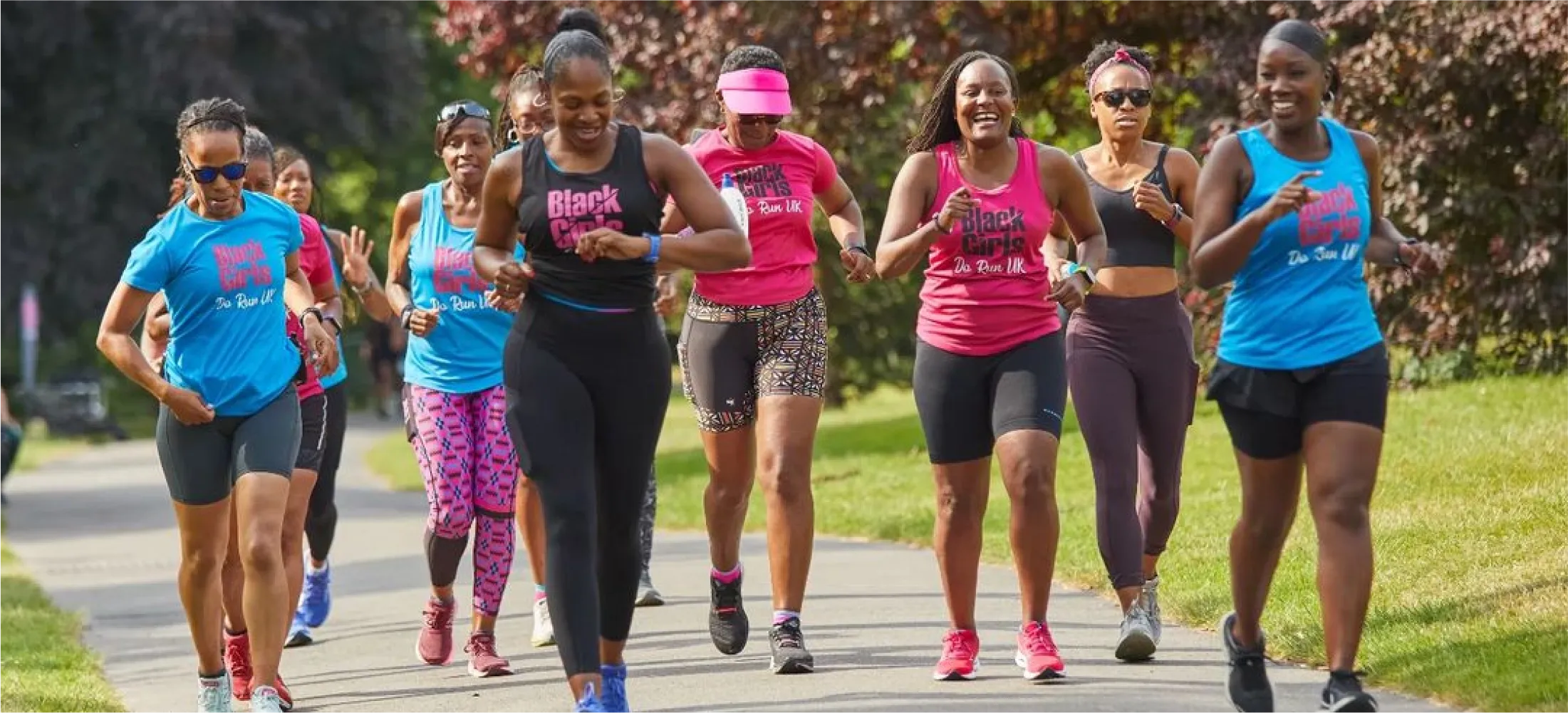
Closing the perception gap
The name and, indeed, the need for such a running club may surprise some people. After all, watch any competition for elite athletes, and you’re likely to see black women dominating both track and distance events. “We’ve got so many really good sprinters from the Caribbean and USA,” notes Thompson, “and amazing long-distance runners from East Africa. But most people can’t run like that.” In fact, a significant perception gap exists between elite athletes and everyday runners due to a simple yet confounding misconception that black women don’t run.
A significant perception gap exists between elite athletes and everyday runners due to a simple yet confounding misconception that black women don’t run.
A recent documentary, Breaking Three Hours, highlights the enormity of this perception gap. Since 1975, around 280,000 runners in the US have completed a marathon in under three hours. How many of them were US-born, African American women? As of 2021, 14. A collection of names so brief that it’s known as ‘The List,’ featuring a staggering 0.005% of the US marathon runners who had achieved a sub-three-hour time. With statistics like these, you can understand why the lack of visibility at marathons can create an additional mental hurdle for many black women in the US and UK to overcome.
undefined

Polar Vantage M3
Smart Multi-Sport Watch
Polar Vantage M3 is a smart multi-sport watch for multi-sport athletes that’s compact yet powerful, stylish yet strong, and designed to bring extraordinary training, sleep and recovery tools into everyday life.
Creating marathon monsters
“Oh my gosh, it’s magical,” gushes Thompson when describing the feeling of the club running together in their Black Girls Do Run t-shirts. “It’s joyful. We have a laugh. This was just one big sisterhood.” Indeed, the camaraderie is evident in everything they post on social media, whether gleefully holding up medals or attending Ladies’ Day en masse at the Royal Ascot horse races. It also extends to the diversity of runners within the group. “We’re all different,” she notes. “We’ve got some fast ones, we’ve got some middle-speed ones, and we’ve got some who finish towards the end. Everybody’s welcome, and we encourage each other.”
This supportive attitude is reflected in Thompson’s approach to new runners who may not have the pace of more seasoned members. “I hear it so many times: “I went to this [running club] and was struggling up the hill. They waited for me, but as soon as I got to the top of the hill, they all ran off,” she recounts from stories she’s been told. “So, I’m always quite careful with this. If we’ve been waiting for someone lagging behind, we must let them catch their breath when they reach the top of the hill. Otherwise, you’re making it harder for [them], and that’s very off-putting,” notes Thompson. “Then they don’t come back.”
Watching the BGDR members grow in their passion and capacity for running is a massive part of the reason Thompson puts so much of her time and effort into the club, along with the close friendships she’s seen blossom within the group. “We’re stuck with each other now,” she jokes. Yet, it was still a surprise when around a fifth of the club expressed enthusiasm for joining the ultra-marathon this year. Thompson dreamed of completing an endurance event like this with her running buddies. But sadly, it wasn’t meant to be this year. “I had to pull out,” she notes with a tone of acceptance. “I hurt my back. It was the right thing to do.”
“They all finished,” Thompson reports with a glow. “I felt that I ran that race too. That’s how proud I felt.”
Yet, 14 members still went on to complete one of the days at Race to the Stones, covering 50km of picturesque British countryside. “They all finished,” Thompson reports with a glow. “I felt that I ran that race too. That’s how proud I felt.” It was a life-changing achievement for those who participated, with members glowing like “they were on this high for weeks.” However, she now wonders what her idea may have unleashed within the group. “They have turned into ultra monsters now,” Thompson laughs. “Three of them that did the race are going to Morocco in November to do another.” Talk of 70km and 100km endurance events have surprised her. “You’re watching and thinking, “Who are these people? What happened to my friend? I remember what you were like when you joined this group, and now...” It’s opened up a can of worms.”
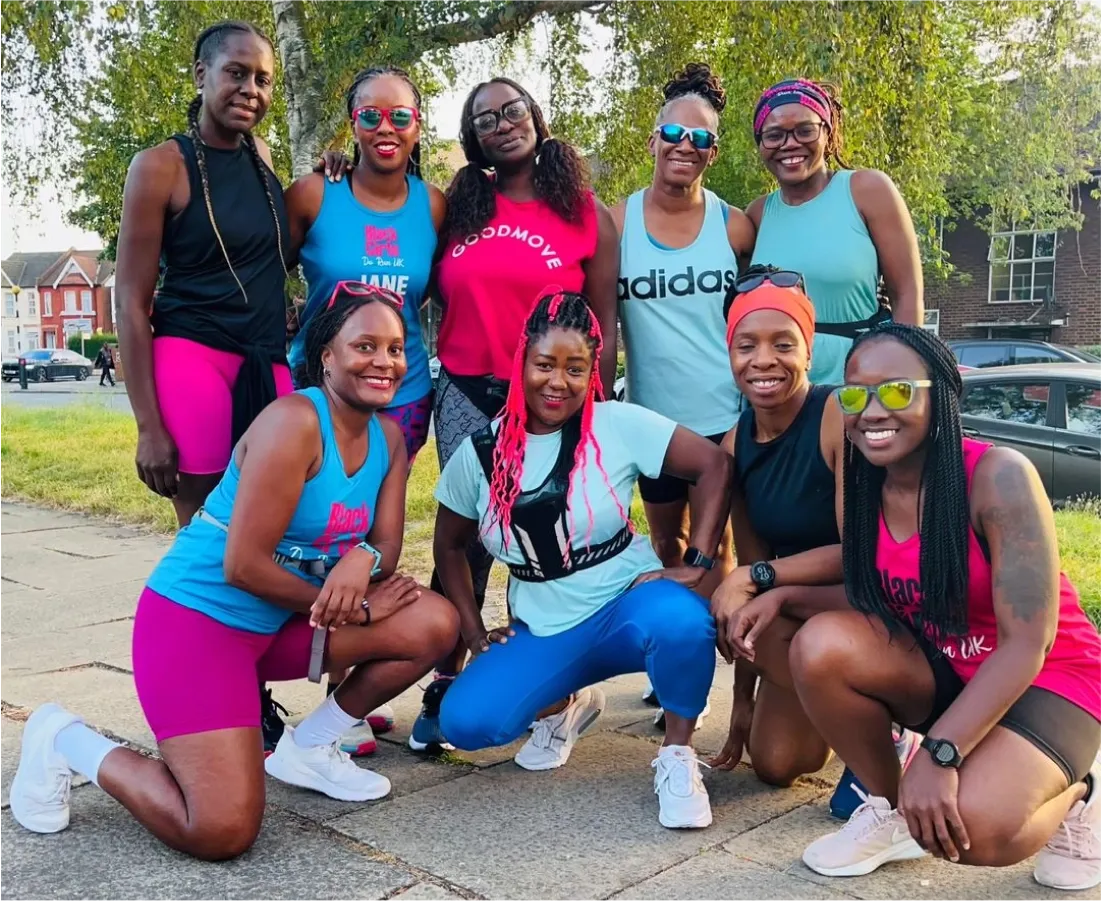
From treadmills to running buddies
For London-born Thompson, running has been a considerable part of her life for 20+ years, when she stumbled upon her passion for it in the late 90s. “My parents are from Jamaica, and everybody always seemed to have this conversation about how this person’s got diabetes and how this person’s got hypertension,” she remembers. “They just accepted it, took the medication, and didn’t try to change their lifestyle in any way.” Realizing that she can transform her story, Thompson joined a gym. “One day, I thought, “I’m not going to have it. I’m going to do my best to see that doesn’t happen to me by leading an active lifestyle.” No one believes me. They say, “How could you think that at age 18?” But I did.”
One day, I thought, “I’m not going to have it. I’m going to do my best to see that doesn’t happen to me by leading an active lifestyle.”
The treadmill quickly became her favorite part of the gym. But it wasn’t until she spontaneously decided to give running outside a try that Thompson discovered why the sport is for her. “My Lord, it nearly killed me,” she laughs. “I didn’t realize it would be so difficult to run outside [compared to a treadmill], but I love it. I love being outside. I love the air, the scenery, the sky. Instead of just walls and more gym equipment.”
In 1999, Thompson entered her first event and recalls, “Since then, I literally haven’t stopped running. I ran the race, got the medal, and was in love. Receiving that medal, I felt like I was on the podium. Like I had won the race.” She would occasionally spot other women like herself at marathons but quickly became accustomed to running on her own. It would be many years before she accidentally became running buddies with Agyemang, a friendship for which each of their sons has cheekily claimed responsibility.
“Receiving that medal, I felt like I was on the podium. Like I had won the race.”
“Our daughters went to the same gymnastics club, so I often would see her and just say hello,” recalls Thompson. Then their sons began playing together, but her conversations with Agyemang rarely strayed from the usual parent topics. “We didn’t know each other ran. We never ever talked about running. But then one day, I was running in a park because we live near each other, and for some reason, I changed direction and went the opposite way,” she recounts. “I bumped into Linda running and was like, “Oh my gosh! I didn’t know you ran!” Realizing that Tuesday was each their day to get out and exercise, they quickly began running together. “That was it. We were all over the place, entering races everywhere.”
Enjoying this article? Subscribe to Polar Journal and get notified when a new Polar Journal issue is out.
Subscribe
From running buddies to running club founders
The idea for Black Girls Do Run started from what Thompson describes as “a strange encounter with a marshall.” She and Agyemang were in a marathon a few years ago when they suddenly realized they had gone off course. “We ran back to the nearest race marshall and said, “Are we going in the right direction?” The event staff met them with a puzzled look, asking, “Are you running the race?” and required some reassurance before pointing them in the right direction.
The marshall’s response confused Thompson. “We’re in running clothes. We had the running bibs on with [event] numbers on them.” The pair began to wonder whether the marshall thought they weren’t running because they were black women. “We don’t know, it might not be,” she notes, “But it prompted a discussion between [us] about the lack of black women at races.” They looked to Black Girls Run and how they had increased representation at marathons in the US and felt this was something they could help grow in the UK as well.
“It prompted a discussion between [us] about the lack of black women at races.”
These days, Thompson is club chair, and Agyemang is club secretary for the team of five women who co-ordinate the EA-affiliated running community. Initially, the club met once a month in London for a social run, but their goal is to begin creating more localized running groups, even within the expansive capital city. “I want to make them so you only have to travel 20 minutes rather than 45 minutes to attend,” says Thompson. “We’ve got the East London one, which will be every other Monday, and then we’ve got NW London every Tuesday.”
It’s not hard to imagine another goal that will loom large for Thompson in the new year: to join others from her club as she tackles her first ultramarathon. For someone who loves to run outdoors, taking on the breathtaking scenery of the British countryside while surrounded by her friends will no doubt be a dream come true.
undefined

Polar Vantage V3
Premium Multisport Watch
An ensemble of biosensing instruments, AMOLED display, dual-frequency GPS, maps, and the most comprehensive suite of training and recovery tools on the market. The stage is set, and the Polar Vantage V3 smart sports watch is ready to put in the performance of a lifetime.
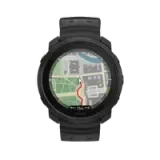 Polar Vantage M3
New
Polar Vantage M3
New
 Polar Grit X2 Pro Titan
New
Polar Grit X2 Pro Titan
New
 Polar Grit X2 Pro
New
Polar Grit X2 Pro
New
 Polar Vantage V3
Polar Vantage V3
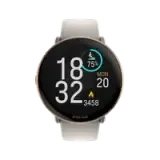 Polar Ignite 3
Polar Ignite 3
 Polar Ignite 3 Braided Yarn
New
Polar Ignite 3 Braided Yarn
New
 Polar Pacer Pro
Polar Pacer Pro
 Polar Pacer
Polar Pacer
 Polar Unite
Grit X Series
Vantage Series
Pacer Series
Ignite Series
Polar Unite
Grit X Series
Vantage Series
Pacer Series
Ignite Series









